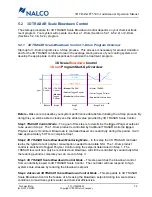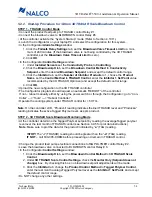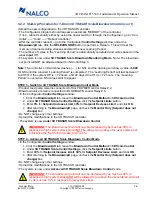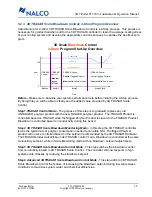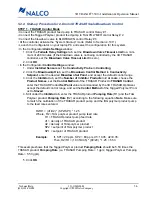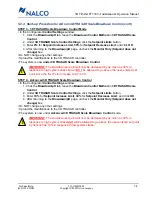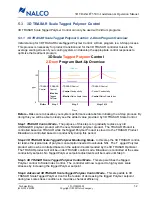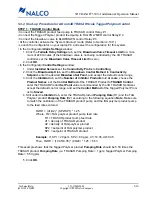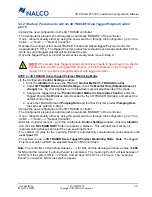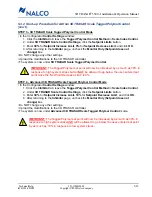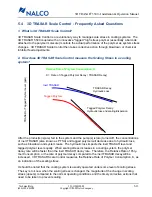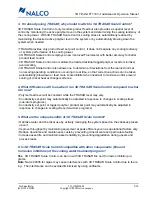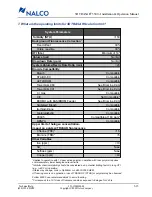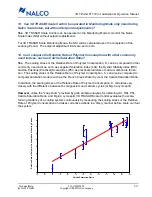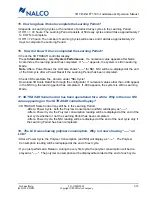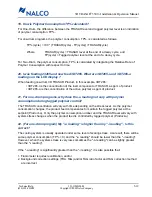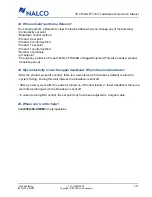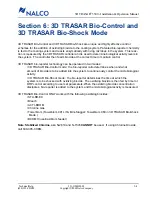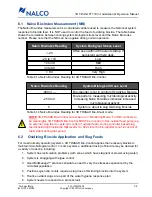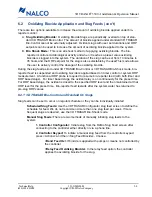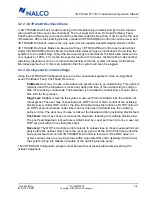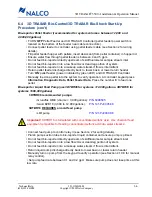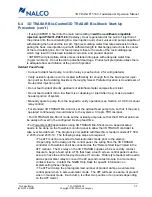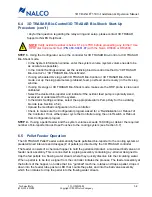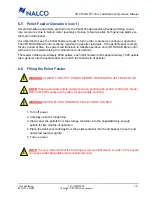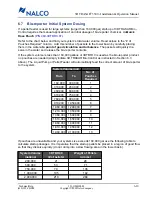
521-OM0108.88
Copyright
2009 Nalco Company
5-16
Technical Help
(630) 305-CHEM
3D TRASAR
5500 - Installation & Operation Manual
8. What 3D TRASAR Products are required for 3D TRASAR Scale Control to work?
3D TRASAR Scale control programs require both an inert TRASAR product and a Tagged Polymer
product. Two different programs are available:
•
One-drum programs
:
The product contains both TRASAR (also known as PTSA) and Tagged polymer.
•
Two-drum programs
:
Product 1 contains TRASAR (also known as PTSA).
Product 2 contains Tagged Polymer
For a complete list of available 3D TRASAR products, please refer to the 3D TRASAR product
selection guide.
9. What is Nalco Scale Index (NSI)?
The Nalco Scale Index (NSI) is a calculated variable that compares the current rate of polymer
consumption against the learned average rate of polymer consumption. NSI has a direct correla-
tion to the cooling system stress level. 3D TRASAR Scale control uses NSI to make set point
adjustments in response to both high and low stress conditions.
10. How does the 3D TRASAR 5500 controller detect "active" polymer?
A new component of 3D TRASAR products is a "tagged" polymer, either Nalco's tagged PRISM
polymer or tagged High Stress Polymer (HSP). The 3D TRASAR 5500 controller measures the
fluorescent intensity of the "tag" to determine the concentration of residual dispersant polymer.
11. What is Background Fluorescence?
Most waters can contain humic and fulvic acids naturally, which when excited by ultraviolet or near
ultraviolet can be moderately fluorescent. The fluorescence intensity arising from such species is
known as background fluorescence, and, if uncorrected, may cause a significant error in fluores-
cence measurements. 3D TRASAR provide automatic background corrections for accurate mea-
surements of TRASAR and tagged polymer levels.
12. I don't feel comfortable allowing the 3D TRASAR controller to adjust the
conductivity setpoint. Must I allow 3D TRASAR to do this, or can I simply establish a
set point as I always have?
It is acceptable to control system Conductivity based on a user-defined Conductivity setpoint.
Setpoints can be selected during configuration and changed at any time. However, to realize the
benefits of 3D TRASAR Scale Control, the controller should be allowed to automatically adjust the
setpoint in order to effectively maximize cycles of concentration to minimize operating cost, or
reduce the cycles as necessary to prevent scale, corrosion and fouling.

